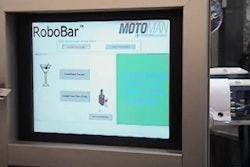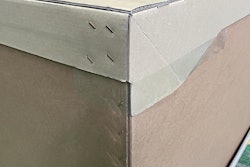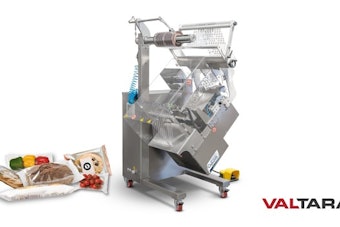For many manufacturers of household, automotive, and personal care products, transitioning products to child-resistant closures (CRCs) will be kid’s play. For others though, complying with the new Consumer Product Safety Commission (CPSC) requirement, which takes effect on October 25, 2002, will require more extensive, sophisticated packaging changes. The CPSC dictate affects products containing more than 10% hydrocarbons by weight and with viscosities of less than 100 SUS (Saybolt Universal Seconds) at 100°F. The agency made the decision because of concerns that the products, if they fall into the hands of young children, could cause chemical pneumonia, pulmonary damage, and death. Phil Lambert, business development manager for Rexam Closures (Evansville, Ind.), says some products will clearly fall into the CR category and others, because hydrocarbon content or viscosity are borderline, may be a close call. In either case, companies can reformulate the product, including moving to higher viscosities, rather than complying with the CRC edict. That is what happened as the result of the CPSC dictate in1996: that companies stop using lidocaine and dibuciane in topical OTC anesthetics because of a fear they would numb a baby’s throat and stop the child’s breathing. About 75% of companies affected, says Lambert, simply substituted other ingredients such as benzocaine for lidocaine. But Lambert thinks that the hydrocarbon rule will reverse that percentage; a substantial majority will convert to CRC packaging. In some product categories, the switch to CRCs will be easy. Automotive products are an example. Many marketers of automotive additives have already gone from a conventional continuous thread screw top to a “push-and-turn” CRC. The cost increase has been minimal, from one to 2½ cents/cap. ‘Permanently-affixed’ dispensers In addition, the automotive products in aerosol cans, trigger sprayers, and pumps are exempt from the requirement if the sprayers and pumps are permanently affixed to the package. However, this might require some new application technology that’s not in common use in plastic packaging. Also exempt are all other product categories. The Consumer Specialty Products Assn., which represents household cleaner makers, and the Cosmetic, Toiletry and Fragrance Assn. had both pressed for—and received—an exemption for aerosols. Bill Lafield, spokesman for the CSPA, says his group was happy with the exemption, which the CPSC said it would re-examine at a future date. Moreover, Lafield explains that many of his members’ key products, such as furniture polish, are already in CRCs. The exemption for aerosols benefits household paints as much as any category. The CPSC considered including aerosols, pumps and triggers, but decided against that, at least for now. In good part, that decision was due to an insufficient number of CRC solutions for those products. Of course there are CRC overcaps for aerosol paints. But removing them can involve a wrestling match with a screwdriver. The CTFA wanted more than just an aerosol exemption; it wanted all cosmetics removed from the rule. The CPSC declined. How to comply Many personal care and cosmetics companies may face a rugged road to CRC compliance. Sun-tan oils is a good example. To begin with, CRCs in the already oily hands of beach-blanket sun worshippers pose a special challenge. Ditto for baby oils that contain mineral oil, which is subject to the rule. Nor are most CRCs particularly elegant in design. Sara Colamarano, spokeswoman for Johnson & Johnson Consumer Products, New Brunswick, NJ, says J&J’s baby oil will comply with the CPSC requirement. She declines to provide any insight into how the company might comply. “We are still in the process,” she explains. J&J may decide to simply increase the viscosity of its product to exempt it from the hydrocarbon rule. But marketers of laxatives containing mineral oil won’t even have to worry about CRCs. Those products are definitely thick enough to be exempt. Any number of skin lotions contain mineral oil, including Keri Lotion by Bristol-Myers Squibb and Nivea from Beiersdorf, Inc., Wilton, CT. Body oils and shampoos can often have hydrocarbons, too, and sometimes odd ones at that. Neutrogena, based in Los Angeles, CA, has a line of T/Gel shampoos.The “T” stands for tar. That line of products may or may not have to go into CRC packaging, depending on its viscosity. Even if personal care products do require CRCs, they can go to pumps, if they are permanently affixed, although that solution obviously thwarts the use of refill packages to replenish the dispensing bottle. Packaging perceptions Packaging of personal care products is in a different league from packaging of automotive products. Aesthetics are a critical factor. Where shampoos, body oils, and hand lotions require CRCs, the entire package may have to be altered. For example, a new bottle neck finish may be in order, one that stylistically jibes with the closure. Although the actual closure cost increase may be just a few pennies, the cost of designing the new bottle and CRC cap and manufacturing the new molds will be more significant. A switch to CRCs may lead to less quantifiable but other important costs, too. Consumer perception of a product can be affected. In the case of topical anesthetics, CRCs have become a beacon of sorts, causing consumers to read an ingredient label more closely. Some shoppers may feel lidocaine is more effective than benzocaine and perceive a CR closure as a “seal” of better effectiveness, according to Rexam’s Lambert. A CRC may negatively affect other products. In the case of suntan oils, it may signal to consumers that the product contains an ingredient that could be hazardous to their sensitive skin. The “packaging equals perception” equation may skew marketing in other ways, too. Take J&J’s baby oil. When one goes to www.JNJ.com, there is a button shown on the company Web site section for www.babycenter.com. When that page is pulled up, there is a whole section on “baby safety” which focuses on poison-proofing one’s home. A number of products containing toxic substances are listed. Baby oil is not among them. At least not yet.
Putting the top down
Consumer Product Safety Commission dictates child-resistant closures for many household and personal care products, but grants some exemptions for aerosols and pumps.
Dec 31, 2001
Machinery Basics
New ebook focused on cartoning equipment
Read about the various types of cartoning equipment, how to select the right one, and common pitfalls to avoid. Plus, read equipment advice from CPGs for ultimate cartoning success.
Read More






















